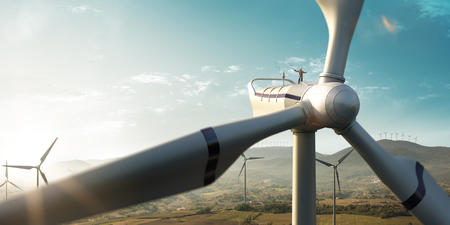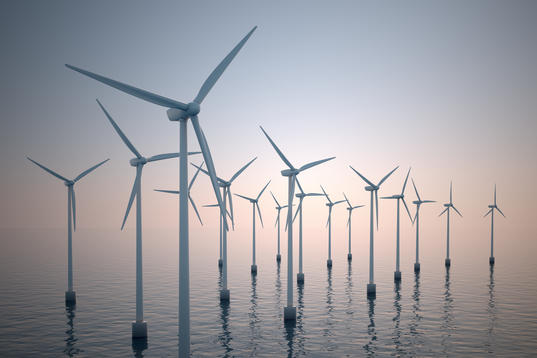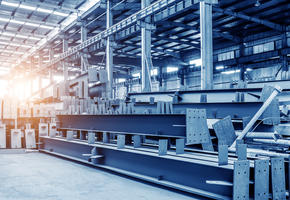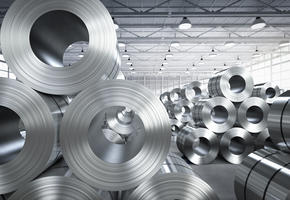Our vision at Ørsted is to create a world that runs entirely on green energy. Our transformation from fossil fuels to one of the largest renewable energy companies and in 2020 ranked the most sustainable company in the world, has been hugely successful. Our renewable energy installations will power communities and economies across three continents. But there remains a significant hurdle ahead of us: decarbonising our supply chain and especially our use of steel.
Steel accounts for about half of the emissions in our offshore wind supply chain. The steel we use in our wind turbine installations is highly specialised and there are no viable, commercial low-carbon alternatives available today.
To support the development of low-carbon steel production, we have targeted a carbon neutral supply chain by 2040, well knowing that it is ten years ahead of what is required by science. However, if the world doesn’t transition to the production of low carbon steel, it will be impossible to reach global net zero emissions by 2050.
Taking the first steps
In January 2020, we launched our ambitious target to decarbonise our entire supply chain by 2040. We are still early in the process but have started by engaging with our strategic suppliers. By working with them, we can map our current supply chain emissions to establish a baseline. With a clear baseline, we can start to work with suppliers to gradually reduce emissions and track our progress.
And while the decarbonisation of our supply chain is necessary, it is not going to be easy. We expect substantial technical challenges along the way not least around steel. To find a sustainable and cost-competitive way to produce steel, we need an incredible amount of innovation and collaboration.
The good news is that our strategic suppliers share our ambitions. So far, we have had a lot of positive feedback, and our suppliers are fully engaged. The message we’ve heard loud and clear is that we must solve this together.

Engaging with the steel industry
We want to work jointly with the steel industry on the roadmap towards carbon neutral steel, and we are ready to be part of the journey of innovation and collaboration to get there.
Together, we need to find ways to scale up production and drive the cost down. From our experience in developing the offshore wind industry, we know that this is an important driver of change in the market.
Together, we need to find ways to scale up production and drive the cost down. From our experience in developing the offshore wind industry, we know that this is an important driver of change in the market.
A decade ago, renewable energy was more expensive than fossil fuels.Today it is cost competitive or cheaper in two-thirds of the world. We face the same challenge with low carbon steel production. As with renewables, this transformation in the market needs to be a partnership across industrial sectors and governments. Governments must set targets and public policy needs to support the journey to allow companies to engage wholeheartedly in the transformation.
Parallels to our own journey
When Ørsted began transforming its business model more than a decade ago, we could see that a future market for renewable energy was emerging. If we had not seen the indication that there was a market, the decision to transform would have been much harder.
Supported by public policy, we engaged wholeheartedly in deploying green energy and driving large-scale innovation that helped drive costs down. This has spurred further demand for renewable solutions – both from governments and now increasingly from the private sector. In the same way, the steel industry needs to see evidence that there are customers down the line that create a demand for buying low carbon steel.
What we tell others
Our advice to other businesses in this space is to take the long-term view and make sure you are clear about where you want to get to. We believe that businesses need to set science-based carbon reduction targets that help limit global warming at 1.5°C above pre-industrial times. It might mean making some tough choices and taking steps towards a future that is uncertain, but it is really the only way if you want to be successful 10 years from now.
If Ørsted had stayed in fossil fuels a decade ago, we would now be an extremely challenged energy company seeing no growth. Deciding to be part of the future and to be a frontrunner has left us in a far better place.
If Ørsted had stayed in fossil fuels a decade ago, we would now be an extremely challenged energy company seeing no growth. Deciding to be part of the future and to be a frontrunner has left us in a far better place.
We are committed to collaborating with the steel sector on a path towards low-carbon steel.
We have 20 years to reach our supply chain decarbonisation target and although the process is filled with challenges, we are excited about the journey ahead. One thing remains clear: We will need low carbon steel to succeed in transitioning to a low-carbon society.


